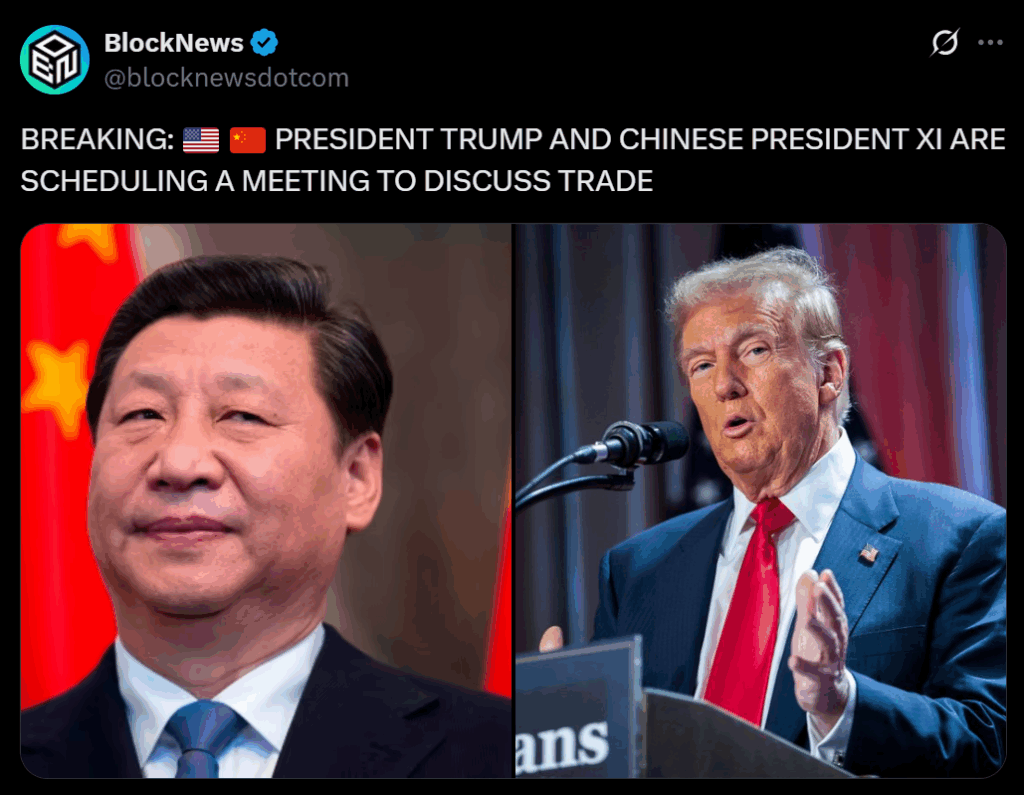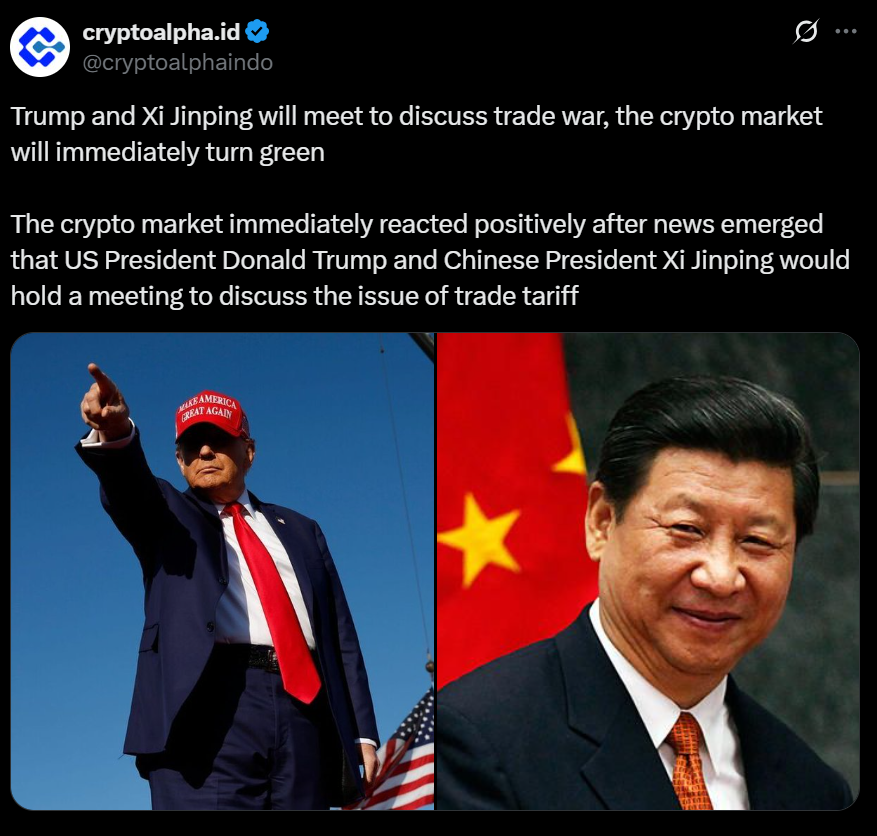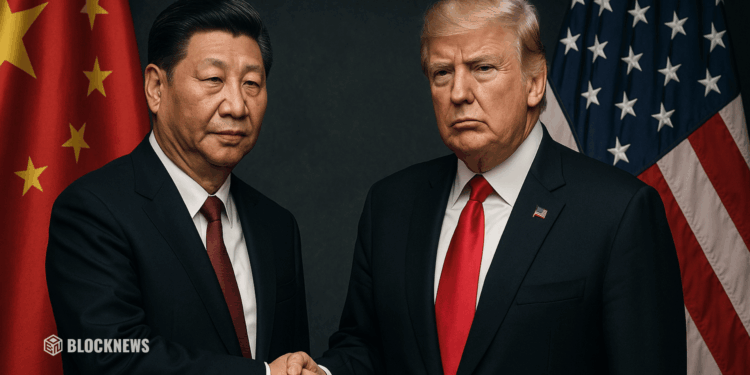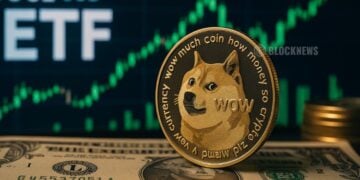- Trump and Xi’s meeting in South Korea remains on schedule despite tariff threats.
- Treasury Secretary Bessent says the 100% tariff “does not have to happen.”
- Both nations signal de-escalation, but markets remain volatile amid new sanctions.
Despite fears of a renewed U.S.-China trade war, officials confirmed that President Donald Trump remains on track to meet Chinese President Xi Jinping in South Korea later this month. According to U.S. Treasury Secretary Scott Bessent, both nations are working to cool tensions after last week’s tariff threats and rare earth export restrictions reignited market chaos.
In an interview with Fox Business Network, Bessent said that “lines of communication have reopened” and emphasized that “the 100% tariff does not have to happen.” The statement comes just days after Trump announced plans to double tariffs on Chinese goods, following Beijing’s decision to tighten export controls on rare earth materials—key inputs for electronics, electric vehicles, and defense manufacturing.

Trade Talks Back On Track
Bessent revealed that U.S. and Chinese negotiators held extensive discussions over the weekend and will continue staff-level meetings in Washington during the IMF and World Bank annual gatherings this week. “The relationship, despite this announcement last week, is good,” he said, suggesting that the upcoming Trump–Xi meeting at the APEC summit in South Korea could help reset the tone.
China’s Commerce Ministry echoed similar sentiment, confirming that both sides held working-level discussions on Monday. However, the ministry also warned that the U.S. “cannot ask for talks while simultaneously threatening new restrictive measures.”
Markets React to Hope and Uncertainty
Following Bessent’s comments, Wall Street rallied, with major indexes closing up as much as 2.2% on Monday. Asian markets opened higher the next morning but quickly reversed course after Beijing announced sanctions on five U.S.-linked subsidiaries of South Korean shipbuilder Hanwha Ocean, sparking renewed concerns that the trade conflict could widen.
The back-and-forth left investors uncertain about whether the optimism around negotiations could hold. Analysts noted that even as both sides strike a more cooperative tone, neither appears ready to back down on strategic issues like technology access, supply chain control, and trade sovereignty.

“Ready to Fight or to Talk”
Both nations remain locked in a delicate balancing act. “China is a command-and-control economy. They are neither going to command nor control us,” Bessent said, adding that Washington expects backing from European and Asian allies. Meanwhile, Beijing’s Commerce Ministry reaffirmed that its stance remains consistent: “If the U.S. wants a fight, China will respond to the end. If it wants to talk, China’s door is open.”
Still, both sides acknowledged that maintaining stability in global supply chains is a shared goal. As one ministry official put it, “Guided by the consensus reached between the two presidents, both sides should safeguard the hard-won progress of consultations.”
The outcome of the Trump–Xi summit could determine whether the trade truce holds or if the world’s two largest economies are headed back into a full-blown trade war — one with far-reaching implications for markets, manufacturing, and global growth.














